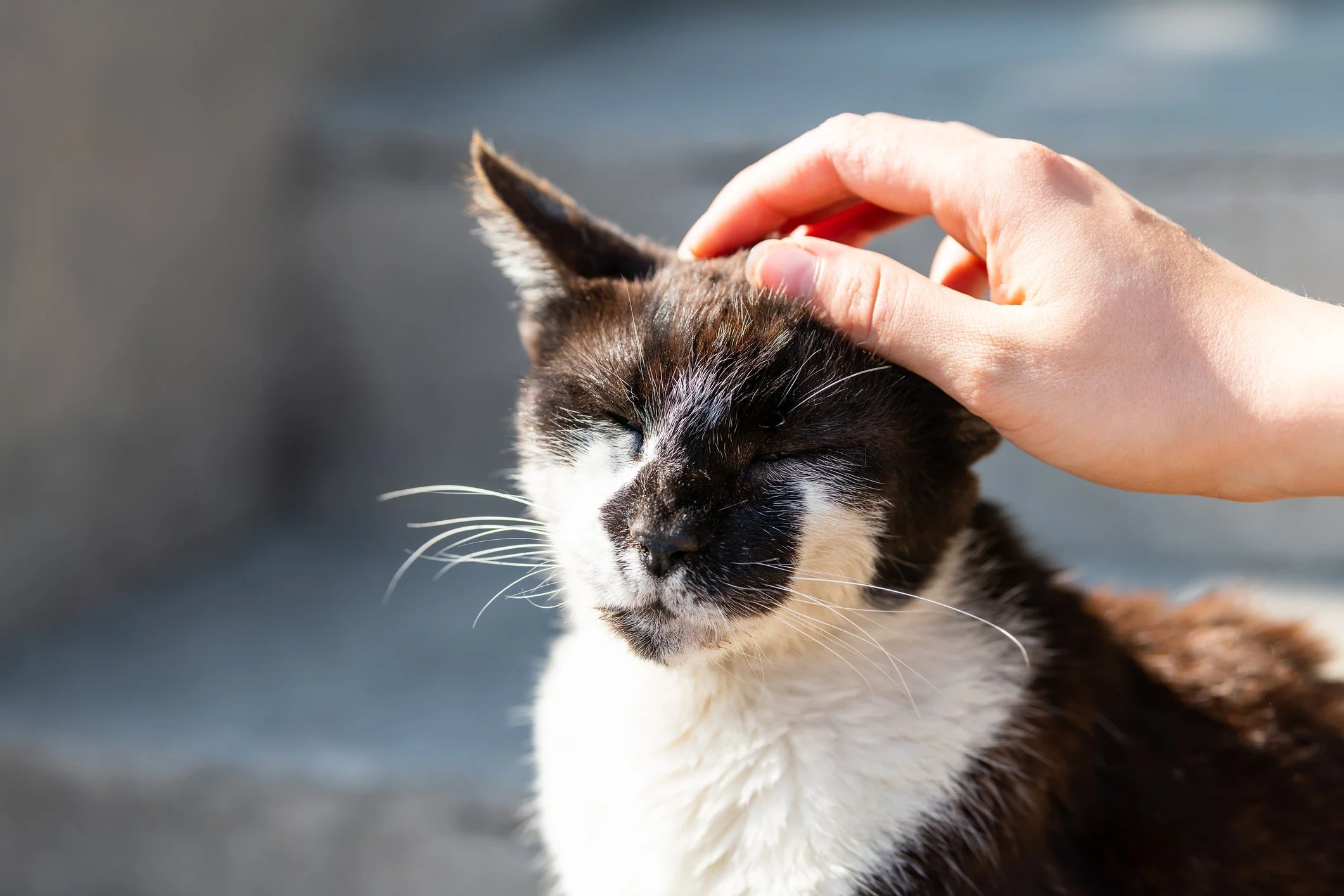Transdermal thiamazole – are cat owners getting crucial safety information?
Transdermal thiamazole (methimazole) gel- are cat owners getting crucial safety information?
What is thiamazole?
Thiamazole* (also known as methimazole) is used for the long-term control of thyroid hormone levels in cats with hyperthyroidism. In the UK, the veterinary authorised forms of thiamazole for cats are tablets (Felimazole, Thiafeline) and oral solutions (Thyronorm and Thiamacare).
For cats that cannot be dosed by mouth, a vet might prescribe thiamazole in the form of a transdermal gel for applying to the inner pinna of the cat. Although less reliably absorbed when used in this way, it might be the only way of treating a cat with thiamazole. Transdermal forms of the drug are available from several of the UK’s veterinary specials manufacturers; as such, they are unlicensed formulations (that is, they do not have a marketing authorisation from the veterinary medicines regulator).
What adverse effects can thiamazole cause in humans?
In humans thiamazole may cause skin and eye irritation. If absorbed it can affect thyroid function (Mittal et al. 2021) More seriously, thiamazole is a human teratogen: it can cross the placenta and may rarely cause foetal abnormalities; it can pass into breast milk. It also has the potential to cause blood disorders, including agranulocytosis.
The risk to the cat owner of adverse effects from applying the thiamazole (methimazole) to the cat’s skin is inherently greater than when it is administered to the cat by mouth because there might be longer contact with the product when administering it; the product is designed for absorption through the skin; the product might remain on the cat’s skin for a period of time before complete absorption with a risk of contact from petting the animal; and the drug might be transferred into the environment through contact.
What is known about transfer of thiamazole from transdermal formulations?
A European application to market a transdermal thiamazole solution for cats was withdrawn in 2014 because the regulatory assessors indicated that the product would not be approved due to the negative risk-benefit ratio. As well as doubts about the efficacy of the product, studies showed that thiamazole residues remained at the application site for several days and this gave the assessors cause for concern about the safety of the product to users. While they considered the risk to users could be mitigated by including advice to wear gloves during application, they questioned whether cat owners would keep this up during long-term use. We cannot know how relevant the safety data in the marketing application is to the products available from specials companies, but it is reasonable to assume that there are similar risks associated with any transdermal thiamazole product. One study of a commercial transdermal thiamazole formulation available in New Zealand (using ears from dead cats) found that the drug moved from the inner to the outer pinna (Hill & Chambers 2015). Other than this, there seems to be an absence of published research into the potential risks associated with transdermal thiamazole.
How vets must ensure that clients are informed about safe use
Transdermal thiamazole products from specials manufacturers are unlicensed formulations. That is, they have no marketing authorisation from the VMD. There will have been no safety studies and the products are not accompanied by product information with instructions for use, including safety information for the user. The onus is on the prescribing vet to supply such information to the client.
As an unlicensed product, transdermal thiamazole comes at the last step of the prescribing cascade, so it should only be considered if any of the authorised products cannot be used. In judging the suitability of the transdermal formulation for the treatment of a particular cat it is important to know about other animals and people (particularly pregnant women and young children) in the cat’s home and to consider whether alternative treatments (diet, surgery, radioactive iodine) might be preferable.
If transdermal thiamazole is necessary, it is crucial that the cat owner is fully informed about the risks and about how to avoid contact with the drug: wear impermeable gloves each time the treatment is applied, wash hands after handling, and avoid touching the cat “for at least a couple of hours” (as suggested by the BSAVA Small Animal Formulary).
The bottom line
Only use transdermal thiamazole when absolutely necessary and ensure cat owners are given clear advice.
Written by Andrea Tarr, Founder and Director, Veterinary Prescriber. Thanks to Sarah Keir for help with writing this Dog’s Blog.
For more on defensive medicine from Sarah: https://www.sarahthevet.com/2020/01/30/defensive-medicine-a-symptom-of-fear/
Read Sarah’s own blog here: https://www.sarahthevet.com/
References
European Medicines Agency. (2014) Withdrawal assessment report for Enthryv (EMEA/V/C/002808/0000) https://www.ema.europa.eu/documents/withdrawal-report/withdrawal-assessment-report-enthryv_en.pdf.
Hill KE, Chambers PJ. (2015) Trans-pinnal movement of methimazole: an in vitro study showing that methimazole can cross from the inner to outer pinna of cats. J Feline Med Surg Dec;17(12):1005-11.https://pubmed.ncbi.nlm.nih.gov/25600079/
Mittal A et al. (2021) Transdermal Absorption of Methimazole- a Cat’s Tale. Journal of the Endocrine Society, Volume 5, Issue Supplement_1, April-May 2021, Page A969, https://doi.org/10.1210/jendso/bvab048.1980
You might also like to read
Our purpose...
......is to provide busy veterinary professionals with impartial information on veterinary medicines with which to make treatment decisions in the best interests of animals, their owners and the environment. We mainly do this through the Virtual Veterinary Medicines Academy where our evidence-based peer-reviewed appraisals are the result of a rigorous research and editorial process and are presented succinctly in our multi-media CPD modules. We’re independent: we don’t sell ads, or receive commercial support. We’re funded by subscribers so you can be sure the information we provide is completely objective. Subscribers get unlimited access to the Virtual Veterinary Medicines Academy.

